

Global high-mix volume high-speed PCBA manufacturer
9:00 -18:00, Mon. - Fri. (GMT+8)
9:00 -12:00, Sat. (GMT+8)
(Except Chinese public holidays)


Global high-mix volume high-speed PCBA manufacturer
9:00 -18:00, Mon. - Fri. (GMT+8)
9:00 -12:00, Sat. (GMT+8)
(Except Chinese public holidays)
HomePage > Blog > Knowledge Base > What Is a Sound Sensor? A Complete Guide
In the current world of electronics, automation, and smart devices, the possibilities for sound detection are at their best. Whether a home sound alarm system, a voice sensor in a smart speaker device, or an Arduino sound sensor in a home-brew robot project, sound detection is a need in today's technical world. A sound sensor, more broadly referred to as a sound detector or sound detection device, is one that receives audio signals and converts them into electrical signals as a method for systems to respond intelligently.
This guide outlines the types of sound sensors, their operation, functionality, applications, and the emerging sound sensor marketplace. By the end of it, you won't merely understand what a sound sensor is but also how you can use it in real projects.
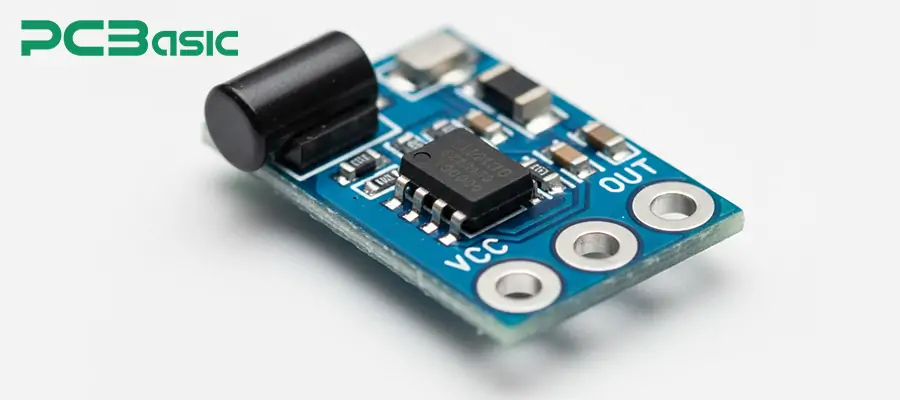
A sound sensor is a sensor that captures sound waves and converts the waves into an electrical signal. The simplest form of a sound detector sensor is a microphone element as the primary input component. When the sound waves arrive at the diaphragm of the microphone, they cause minor changes in the voltage which can then be amplified and processed by a circuit.
These sensors are widely used in many different industries. For example:
In consumer electronics and smartphones, the voice sensors detect and process voice commands.
In industrial environments, sound detectors monitor machine noise for predictive maintenance.
In robotics, an Arduino sound sensor allows robots to react to claps, whistles, or other sounds.
Essentially, a sound detector device acts as the ear of an electronic system.
One of the most important things to know about sound sensors is that there are different sound sensor types, each optimized for specific applications.
● Microphone-Based Sound Detectors
The most popular sound detectors consist of microphones, for example, electret or MEMS microphones. These are optimal in applications such as voice sensors in smartphones or domestic assistants.
● Piezoelectric Sound Sensors
Piezoelectric crystals are employed to detect vibrations induced by sound. These devices are frequently utilized in industrial monitoring and the design of sound alarm systems, wherein the detection of mechanical vibrations holds greater significance than the accurate capture of vocal signals.
● Ultrasonic Sound Sensors
These work at frequencies beyond human hearing (usually >20 kHz). They find application in motion detectors with sound, robot obstacle detection, and in distance measurement applications.
Comparison of Different Types of Sound Sensors
|
Type of Sound Sensor |
Working Principle |
Common Applications |
|
Microphone-Based |
Converts sound pressure into voltage signals |
Voice sensors, Arduino projects, smartphones |
|
Piezoelectric |
Uses crystals to detect vibrations generated by sound waves |
Industrial monitoring, machinery diagnostics, sound alarm systems |
|
Ultrasonic |
Emits and receives high-frequency sound waves beyond human hearing |
Robotics, obstacle detection, security motion sensors |
Although all are sound detectors, the right choice depends on your project’s needs.
The concept of "how sound sensors work" is quite simple but effective. A sound detector device works because it converts air vibrations into electrical signals.
Sound waves hit the microphone diaphragm: when sound waves traverse through the air, they hit the sensor's diaphragm (which is simply a thin piece of membrane) causing it to move forward and back.
Conversion into electrical signals: the mechanical vibrations are translated into small electrical signals - small, varying voltages in which the sound wave is represented.
Signal amplification: since these signals are so weak, the sensor's internal circuits amplify the signals, which will make the output readable for microcontrollers or computers.
Threshold detection: some sound detector modules have a threshold function incorporated. This means that the only sounds that will create a digital output signal are sounds above a certain loudness (like a clap or knock).
For example, an Arduino sound sensor lets you program it so that clapping once turns a light on, and clapping again turns it off. This is a real-world example of using a sound detector sensor.
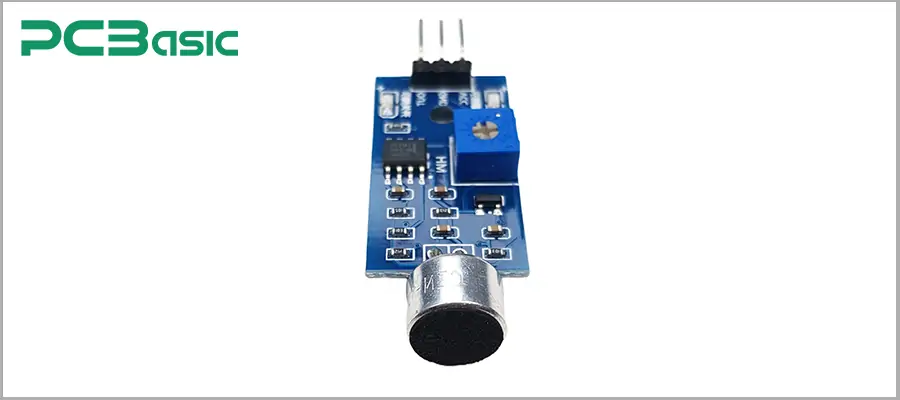
Not all sound detectors are equal. Different designs have different advantages.
Analog vs. Digital Sound Sensors
● Analog sound sensors output a continuous voltage that corresponds to sound intensity.
● Digital sound detectors only output HIGH or LOW depending on whether the sound level crosses a threshold.
Sensitivity Range and Accuracy
A proper sound detector device should be designed so that sensitivity can be adjusted depending on the application. For example, in a smartphone voice sensor, it is critical to have accurate sensitivity in the presence of potentially thousands of other sounds. In contrast, an industrial alarm sound detection system really only needs to have reliable noise thresholding to distinguish between an important sound and a less important one, such as background noise. Adjustable sensitivity is desirable to maximize performance for many uses.
Speed and Reliability in Detection
Sound sensors are used in many applications, especially in security. Sound sensors are required to act in as little time as possible and with as few resources as possible. In security applications, even the littlest amount of time can have dire consequences, possibly missing out on important sounds, alarms, or intrusions. This is why performance speed is a necessity to support safety and maintain efficient monitoring and protection for sensitive environments.
Advantages
● Simple design and low cost make them widely available and budget-friendly.
● Easy to integrate with Arduino and other microcontrollers for quick prototyping.
Limitations
● Highly sensitive to ambient noise, which can affect accuracy in noisy surroundings.
● Limited range and not always precise in detecting the exact source of sound.
One of the most popular applications for beginners is the Arduino sound sensor project.
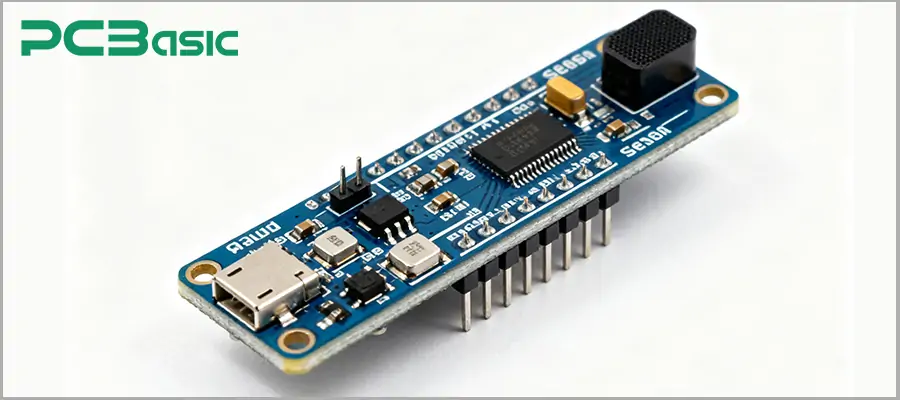
● An Arduino board
● A sound detector sensor module
● Jumper wires and LEDs for testing
Most Arduino sound sensors have:
● VCC (power)
● GND (ground)
● OUT (signal pin for digital/analog output)
Using simple Arduino code, you can program an LED to turn on when the sound sensor detects noise.
Calibration ensures the sound detector only responds to intentional signals (like clapping).
This demonstrates how easy it is to bring a sound detector device to life in projects.
Sound sensors are employed in many applications because they are very good at hearing and responding to sound signals. Some of the applications include:
1. Used in security systems and burglar alarms in the identification of unusual sounds such as broken glass, forced opening or excessive noise.

2. Facilitate voice recognition and hands-free functioning, thereby making the devices respond to voice commands or play music or manage smart home gadgets.
3. Robots and DIY Arduino projects employ sound sensors in such a way that the projects can act upon claps, knocks or voice.
4. Utilized in cities for the control of traffic noise, construction noise, and overall ambient noise levels and hence facilitating better municipal planning.
5. Utilized in factories and plants to monitor atypical machine sounds, thereby facilitating predictive maintenance and minimizing downtime.
These applications highlight the versatility and importance of sound detectors across consumer, industrial, and environmental sectors.
The global sound sensors market has experienced consistent growth, propelled by advancements in the Internet of Things (IoT), artificial intelligence (AI), and intelligent devices. Such technologies are generating new opportunities for sound detection in both consumer and industrial applications.
● Global Overview: The market is growing very fast in the segments of automotive, healthcare, consumer electronics, and defense, in which sound sensors have applications for safety, monitoring, automation, and voice-based technologies.
● Consumer Electronics: These devices are used in smartphones, laptops, smart TVs, and voice control interfaces (like Alexa and Google Home) for engaging with our devices in a seamless human-device interface.
● Healthcare: These devices are integrated into patient monitoring systems and medical devices to achieve voice-enabled patient alerts, monitor high-risk breathing patterns, or support elderly or other differently-abled patients.
● Automotive: These devices are used for in-vehicle noise monitoring, voice recognition systems for in-vehicle experiences, and alerts and warnings to provide safety, comfort, and awareness for the traveler.
● Industrial: These devices are used for predictive maintenance, noise or fault detection, and noise level monitoring to reduce and mitigate downtime and ensure safety in the workplace environment.
According to industry research, demand for sound sensor types like MEMS microphones and ultrasonic detectors is set to grow significantly in the coming decade.
A sound sensor is so much more than just a simple microphone, it is a sound detector device that can operate anything from Arduino sound sensors in a hobby project to sound alarm systems in security systems. By understanding what the different types of sound sensors are, how to extract information from sound sensors, and what types of applications sound sensors are being used in, engineers, makers, and companies can make better choices.
The sound sensor market is growing rapidly and soon sound sensors will be part of many robotics, AI, consumer electronics, and industrial monitoring. If you are developing a project that includes sound, sound sensor will be a simple, inexpensive, and effective mechanism to make your technology respond.
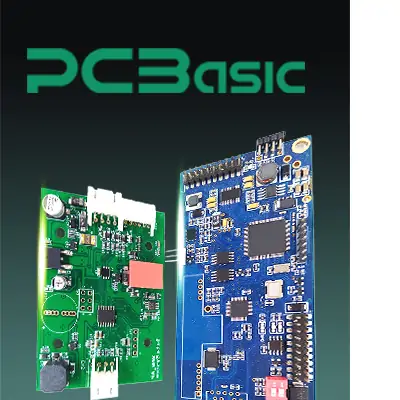 About PCBasic
About PCBasic
Time is money in your projects – and PCBasic gets it. PCBasic is a PCB assembly company that delivers fast, flawless results every time. Our comprehensive PCB assembly services include expert engineering support at every step, ensuring top quality in every board. As a leading PCB assembly manufacturer, we provide a one-stop solution that streamlines your supply chain. Partner with our advanced PCB prototype factory for quick turnarounds and superior results you can trust.
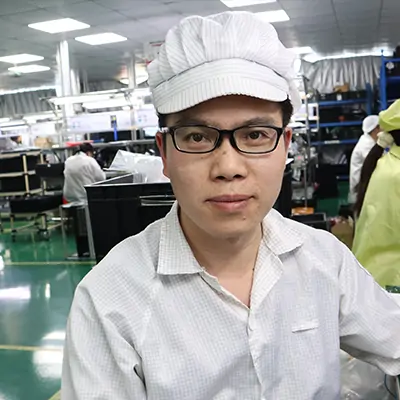
Assembly Enquiry
Instant Quote
Phone contact

+86-755-27218592
In addition, we've prepared a Help Center. We recommend checking it before reaching out, as your question and its answer may already be clearly explained there.
Wechat Support

In addition, we've prepared a Help Center. We recommend checking it before reaching out, as your question and its answer may already be clearly explained there.
WhatsApp Support

In addition, we've prepared a Help Center. We recommend checking it before reaching out, as your question and its answer may already be clearly explained there.
